Một máy đóng nắp bán tự động (còn gọi là máy đóng nắp chai hoặc máy đóng nắp) là một thiết bị để bàn tự động hóa việc siết chặt nắp chai và hộp đựng. Nó nằm giữa một máy đóng nắp hoàn toàn thủ công và một máy hoàn toàn tự động. Trong thực tế, người vận hành thường đặt một nắp lỏng vào chai rồi kích hoạt máy (thường bằng bàn đạp chân hoặc điều khiển cảm ứng). Sau đó, mâm cặp hoặc trục chính của máy sẽ hạ xuống và đóng nắp với mô-men xoắn chính xác, niêm phong chai nhanh chóng và đồng đều. Vì tự động hóa bước siết chặt nắp thực tế, máy đóng nắp bán tự động giúp giảm đáng kể lao động thủ công và tăng tốc sản xuất so với đóng nắp thủ công. Đồng thời, nó nhỏ gọn và giá cả phải chăng hơn hệ thống đóng nắp hoàn toàn tự động, khiến nó trở nên lý tưởng cho các dây chuyền sản xuất vừa và nhỏ. Về bản chất, loại máy đóng nắp chai này mang lại nhiều lợi ích về năng suất và tính nhất quán của tự động hóa, trong khi vẫn yêu cầu người vận hành phải nạp chai hoặc nắp.
Máy đóng nắp bán tự động có thể xử lý nhiều kiểu nắp khác nhau — ví dụ như nắp vặn bằng nhựa, nắp vương miện bằng kim loại, nắp lăn (ROPP) hoặc nắp chụp. Thiết kế cụ thể của máy đóng nắp (đầu kẹp hoặc đầu) được chọn để phù hợp với loại nắp. Nhiều mẫu máy có trục chính hoặc đầu kẹp có thể điều chỉnh để có thể siết chặt nắp lật, nắp phun cò hoặc các đường kính khác nhau. Trong các hoạt động đóng gói, những máy này đặc biệt phổ biến trong các ngành công nghiệp như dược phẩm, mỹ phẩm, thực phẩm & đồ uống và hóa chất, nơi khối lượng sản xuất vừa phải đòi hỏi phải niêm phong nhất quán với mức đầu tư tối thiểu.
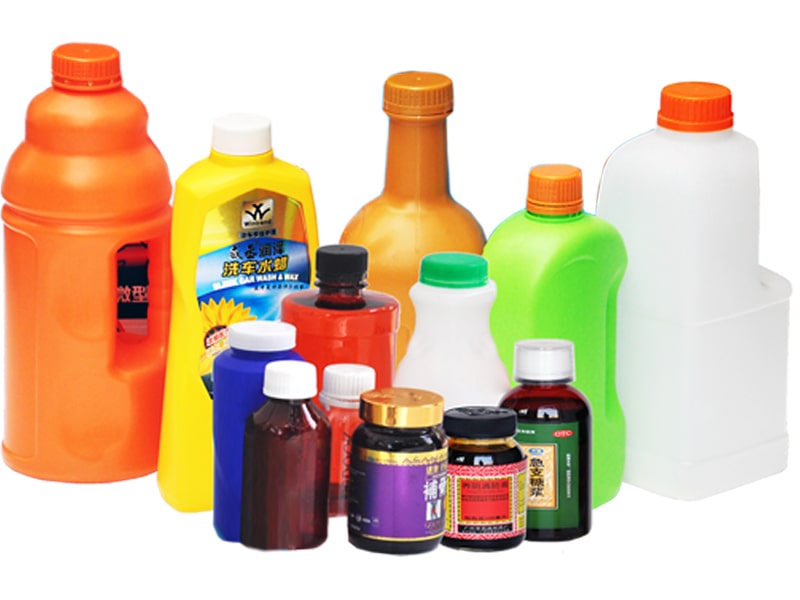
Lợi ích của việc sử dụng máy đóng nắp bán tự động cho dây chuyền sản xuất
Máy đóng nắp bán tự động có một số ưu điểm chính so với các phương pháp thủ công hoàn toàn:
● Cải thiện tốc độ và thông lượng. Bằng cách tự động hóa hành động siết chặt nắp, máy đóng nắp chai bán tự động có thể đóng nhiều nắp chai hơn mỗi phút so với người đóng bằng tay. Tốc độ thông thường là khoảng 10–30 chai mỗi phút đối với máy đóng nắp bán tự động, tùy thuộc vào kiểu máy. Ví dụ, một nhà cung cấp lưu ý rằng máy đóng nắp bán tự động có thể siết chặt khoảng 20 chai mỗi phút, một bước nhảy vọt đáng kể so với phương pháp thủ công. Năng suất cao hơn này có thể tạo ra hoặc phá vỡ năng suất trong một dây chuyền sản xuất theo lô nhỏ.
● Mô-men xoắn và chất lượng ổn định. Không giống như đóng nắp thủ công (dựa vào sức mạnh của bàn tay người vận hành), máy bán tự động áp dụng cùng một mô-men xoắn cho mỗi chai. Sự nhất quán này giúp ngăn ngừa việc vặn chặt không đủ (có thể gây rò rỉ) hoặc vặn chặt quá mức (có thể làm rách nắp hoặc làm hỏng niêm phong). Nhiều máy đóng nắp bán tự động cho phép điều khiển mô-men xoắn có thể điều chỉnh để có thể tinh chỉnh độ chặt cho các nắp mỏng manh hoặc nhựa cứng. Kết quả là ít lãng phí sản phẩm hơn và chất lượng niêm phong đáng tin cậy hơn.
● Tiết kiệm nhân công và công thái học. Bằng cách thực hiện công việc đẩy và quay nặng, máy đóng nắp làm giảm sự mệt mỏi của người vận hành. Một máy có thể hoàn thành trong vài giây những gì có thể mất nhiều lần quay thủ công. Điều này không chỉ tăng tốc độ sản xuất mà còn giảm bớt căng thẳng lặp đi lặp lại cho công nhân. Một số mẫu được thiết kế với bàn đạp chân hoặc cần gạt tay để vận hành trực quan, nghĩa là một người có thể dễ dàng thực hiện quy trình đóng nắp trong khi chuẩn bị chai tiếp theo.
● Tính linh hoạt và hiệu quả về không gian. Máy đóng nắp bán tự động thường là những thiết bị nhỏ gọn, để bàn có thể lắp vừa vào sàn nhà máy hoặc không gian phòng thí nghiệm hạn chế. Chúng không yêu cầu tích hợp băng tải đầy đủ của dây chuyền tự động, do đó có thể thêm chúng sau máy chiết rót hoặc sử dụng như một trạm độc lập. Do khả năng thích ứng của chúng, chúng thường được mô tả là "dễ sử dụng và thích ứng" cho nhiều thiết lập sản xuất khác nhau. Trong nhiều trường hợp, máy đóng nắp bán tự động thậm chí có thể được lắp trên băng tải hoặc bàn làm việc có thể điều chỉnh độ cao để phù hợp với không gian làm việc.
● Hiệu quả về mặt chi phí cho khối lượng vừa và nhỏ. Đối với các hoạt động không thể biện minh cho chi phí của một dây chuyền đóng nắp hoàn toàn tự động, máy bán tự động là một “điểm ngọt”. Nó cung cấp chất lượng tự động với một phần nhỏ chi phí. Nó thường có giá thành thấp hơn nhiều so với hệ thống hoàn toàn tự động, có chi phí lắp đặt thấp hơn và cần ít người vận hành hơn. Đồng thời, nó cung cấp năng suất nhanh hơn nhiều so với đóng nắp thủ công. Như một nhà sản xuất lưu ý, máy đóng nắp bán tự động “lý tưởng cho các hoạt động đóng chai quy mô nhỏ đến trung bình” do độ chính xác và dễ sử dụng của chúng.
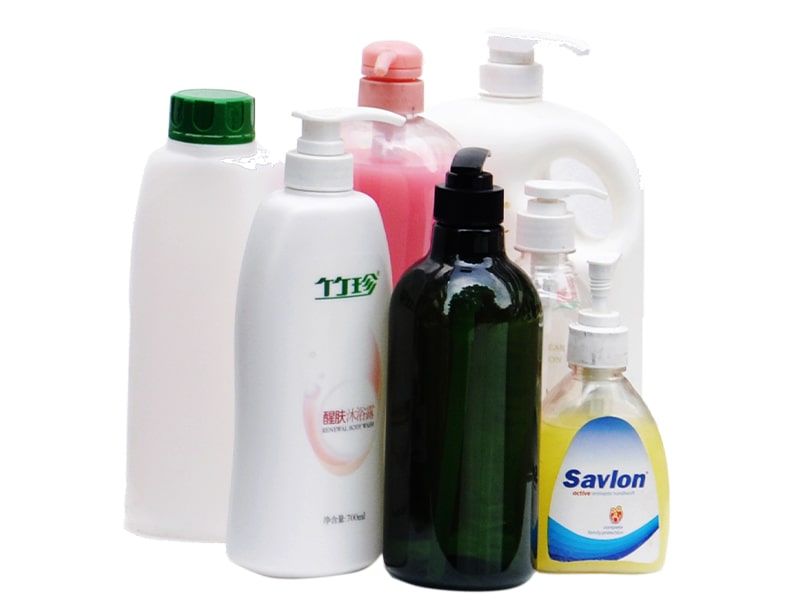
Các yếu tố chính cần xem xét khi lựa chọn máy đóng nắp
Khi lựa chọn máy đóng nắp bán tự động (thường được gọi là máy đóng nắp vặn hoặc người đóng nắp chai ), điều quan trọng là phải kết hợp khả năng của máy với nhu cầu sản xuất cụ thể của bạn. Tất cả các yếu tố sau đây đều phải được đánh giá:
● Kiểu và hình dạng của nắp: Xác định chính xác loại nắp bạn sẽ sử dụng – nắp vặn bằng nhựa, nắp lăn kim loại (ROPP), nắp bấm, nắp lật, bình xịt cò, v.v. Mỗi kiểu nắp có thể yêu cầu thiết kế hoặc cơ chế kẹp khác nhau. Ví dụ, máy đóng nắp ROPP khác với máy đóng nắp vặn tiêu chuẩn. Như một hướng dẫn đã lưu ý, loại nắp (và hình dạng/đường kính của nắp) là tiêu chí lựa chọn cơ bản. Biết kích thước nắp của bạn: phạm vi đường kính (ví dụ: 20–50 mm), chiều cao và nắp có các tính năng đặc biệt (như vành hoặc dải chống giả mạo) hay không. Máy đóng nắp phải hỗ trợ các kích thước nắp bạn sử dụng hoặc có thể điều chỉnh để phù hợp với chúng.
● Khả năng tương thích của chai/bình chứa: Hãy xem xét phạm vi kích thước, hình dạng và vật liệu của chai. Máy đóng nắp chỉ cần xử lý một kiểu hộp đựng hay nhiều định dạng? Nhiều máy đóng nắp bán tự động có thể kẹp các chai từ lọ nhỏ (cao ~ 50 mm) đến lọ lớn (300 mm trở lên). Ngoài ra, hãy lưu ý hình dạng chai: tròn, vuông, bầu dục, v.v. Một số thiết kế kẹp dễ chấp nhận hơn đối với các hình dạng khác thường. Kiểm tra trọng lượng và độ dễ vỡ của chai của bạn - thủy tinh nặng hoặc dày có thể cần hỗ trợ chắc chắn hơn hoặc phương pháp đóng nắp khác. Băng tải hoặc đế của máy đóng nắp phải hỗ trợ kích thước chai của bạn và chiều cao của nó phải có thể điều chỉnh được nếu các chai có chiều cao khác nhau.
● Tốc độ sản xuất (Thông lượng): Ước tính số lượng chai mỗi phút (hoặc mỗi giờ) bạn cần đóng nắp. Điều này quyết định xem máy đóng nắp để bàn có đủ không hay bạn cần nhiều đầu đóng nắp. Máy bán tự động có nhiều loại khác nhau – một số mẫu chỉ đóng nắp \~10–15 chai/phút, trong khi những mẫu khác có thể đạt 30–40 chai/phút (xem XuebaPack SFXG-100 so với SFXG-200 bên dưới). So sánh với tốc độ chiết rót của bạn: lý tưởng nhất là máy đóng nắp không nên làm tắc nghẽn đường ống. Hãy nhớ rằng tốc độ cao hơn thường có nghĩa là chi phí cao hơn, vì vậy hãy cân bằng nhu cầu thông lượng của bạn với ngân sách. Nếu bạn thấy trước sự tăng trưởng, bạn có thể muốn một máy đóng nắp có một số khoảng trống về tốc độ.
● Yêu cầu về mô-men xoắn: Lượng mô-men xoắn (lực xoắn) cần thiết phụ thuộc vào vật liệu và ứng dụng của nắp. Nắp cứng hơn hoặc nắp yêu cầu niêm phong chống giả mạo thường cần nhiều mô-men xoắn hơn. Hãy tìm một máy đóng nắp có điều khiển mô-men xoắn có thể điều chỉnh, để bạn có thể quay số vừa đủ lực để niêm phong mà không làm hỏng nắp. Cài đặt mô-men xoắn chính xác (thường được đo bằng kgf·cm hoặc inch-lb) giúp tránh nới lỏng trên kệ hoặc làm nứt các chai mỏng manh. Kiểm tra phạm vi mô-men xoắn của máy; ví dụ, dòng SFXG cung cấp 4–8 kgf·cm cho các nắp tiêu chuẩn. Ngoài ra, khả năng lặp lại mô-men xoắn cao là điều quan trọng; các máy hàng đầu đảm bảo mô-men xoắn giống nhau mọi lúc để duy trì chất lượng.
● Cấu trúc máy và vật liệu: Chất lượng xây dựng ảnh hưởng đến tuổi thọ, vệ sinh và sự tuân thủ. Các dây chuyền thực phẩm, dược phẩm hoặc mỹ phẩm thường yêu cầu kết cấu bằng thép không gỉ (đặc biệt là các bộ phận tiếp xúc) để chống ăn mòn và đáp ứng các tiêu chuẩn vệ sinh. Hãy tìm những máy được dán nhãn thép không gỉ 304 hoặc 316 nếu bạn cần rửa sạch hoặc vận hành không có bụi. Hướng dẫn đóng gói của SFXB khuyên bạn nên kiểm tra vật liệu và quy trình kiểm soát chất lượng do nhà cung cấp sử dụng. Ngoài ra, hãy cân nhắc đến diện tích và trọng lượng (các máy bán tự động có phạm vi từ \~40–60 kg) – các đơn vị nhỏ hơn tiết kiệm không gian nhưng có thể có ít tính năng hơn. Khung chắc chắn, ổn định giúp giảm rung động và giúp duy trì nắp máy đồng nhất.
● Kiểm soát và khả năng điều chỉnh: Máy đóng nắp tốt cung cấp các nút điều khiển thân thiện với người dùng. Các máy bán tự động hiện đại thường có màn hình kỹ thuật số hoặc thậm chí là bảng điều khiển màn hình cảm ứng để cài đặt mô-men xoắn, số lượng nắp và tốc độ. Bàn đạp chân hoặc nút điều khiển thoải mái cho phép vận hành rảnh tay trong quá trình đóng nắp. Các điều chỉnh chính phải không cần dụng cụ hoặc nhanh chóng - ví dụ, một bánh xe tay hoặc tay quay để điều chỉnh chiều cao đầu khi chuyển đổi kích thước chai. Ví dụ, các mẫu XuebaPack có các nút điều khiển vi máy tính với các nút cảm ứng và một bánh xe tay để điều chỉnh chiều cao. Nhãn rõ ràng và các chỉ số dễ đọc giúp đào tạo người vận hành nhanh hơn và giảm lỗi.
● Bảo trì và khả năng bảo dưỡng: Ngay cả một máy đóng nắp được chế tạo tốt cũng sẽ cần được vệ sinh thường xuyên và bảo dưỡng định kỳ. Hãy cân nhắc xem việc tiếp cận các bộ phận hao mòn (như mâm cặp, dây đai, ổ trục) để thay thế dễ dàng như thế nào. Thiết kế dạng mô-đun có sẵn phụ tùng thay thế là một điểm cộng. Tìm hiểu xem nhà sản xuất có cung cấp tài liệu hoặc video không. Ngoài ra, hãy kiểm tra xem máy có các tính năng an toàn (bảo vệ, dừng khẩn cấp) và có đáp ứng bất kỳ chứng nhận cần thiết nào không (CE, UL, ISO, v.v.). Những yếu tố này góp phần vào sự an toàn và độ tin cậy của người vận hành trong thời gian dài.
● Tùy chọn tích hợp và cấp liệu: Cuối cùng, hãy nghĩ về cách máy đóng nắp sẽ phù hợp với toàn bộ dây chuyền của bạn. Các chai sẽ được di chuyển bằng tay hay trên băng tải? Bạn có cần hệ thống phân loại/nạp nắp để tự động đặt nắp vào trục chính không? Một số máy bán tự động có thể được gắn vào bát hoặc máy phân loại nắp, trong khi những máy khác yêu cầu nạp nắp thủ công. Đảm bảo chiều cao làm việc phù hợp với thiết bị thượng nguồn/hạ nguồn hoặc chuẩn bị sử dụng bàn nạp/xuất. Nếu dây chuyền của bạn sẽ nâng cấp lên chế độ tự động hoàn toàn sau này, hãy kiểm tra xem mẫu bán tự động có tương thích với máy nạp nắp tự động không.
Tóm lại, hãy chọn một máy đóng nắp bán tự động phù hợp chính xác với thông số kỹ thuật về nắp và chai của bạn, đáp ứng tốc độ và mô-men xoắn mong muốn của bạn và được chế tạo từ vật liệu phù hợp. Danh sách kiểm tra kích thước nắp, kích thước chai, sản lượng mục tiêu và các tính năng cần thiết (điều khiển, an toàn, chứng nhận) sẽ giúp thu hẹp các lựa chọn.
 |
 |
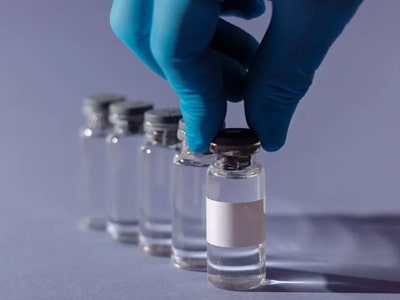 |
Máy đóng nắp thủ công so với bán tự động so với hoàn toàn tự động
Hiểu được sự khác biệt giữa máy đóng nắp bán tự động với máy đóng nắp thủ công và máy đóng nắp hoàn toàn tự động giúp làm rõ sự đánh đổi:
● Máy đóng nắp thủ công: Đây là những thiết bị đơn giản, thường di động (đôi khi được gọi là máy đóng nắp để bàn hoặc máy đóng nắp cầm tay) hoàn toàn dựa vào hoạt động của con người. Người vận hành phải tác dụng toàn bộ mô-men xoắn bằng tay, sử dụng cần gạt hoặc dụng cụ khí nén. Chúng không cần điện và có chi phí ban đầu rất thấp. Tuy nhiên, phương pháp thủ công chậm (chỉ vài chai mỗi phút) và không nhất quán - mệt mỏi có thể dẫn đến nắp lỏng và thậm chí là chấn thương cổ tay theo thời gian. Máy đóng nắp thủ công phù hợp nhất với các lô rất nhỏ hoặc quy mô phòng thí nghiệm, nơi tốc độ không phải là yếu tố quan trọng. Một nguồn tin lưu ý rằng việc đóng nắp thủ công, mặc dù ban đầu không tốn kém, nhưng "nhanh chóng trở nên tốn kém quá mức" về nhân công và thời gian cho các lô lớn hơn.
● Máy đóng nắp bán tự động: Máy bán tự động tự động hóa bước vặn chặt nắp nhưng vẫn cần người vận hành nạp chai (và thường là đóng nắp). Máy thường sử dụng động cơ khí nén hoặc điện để quay máy đóng nắp, người vận hành kích hoạt máy thông qua bàn đạp hoặc nút bấm. Điều này tạo ra sản lượng vừa phải - thường vào khoảng 10–40 chai mỗi phút tùy thuộc vào kiểu máy. Trên thực tế, máy đóng nắp bán tự động có thể đạt được năng suất cao hơn đáng kể so với đóng nắp thủ công trong khi chi phí thấp hơn nhiều so với hệ thống hoàn toàn tự động. Theo dữ liệu của ngành, máy đóng nắp bán tự động có thể xử lý khoảng mười thùng chứa mỗi phút, so với chỉ một số ít thùng chứa thủ công. Vì lý do này, máy đóng nắp bán tự động tạo ra sự cân bằng tốt cho sản xuất khối lượng trung bình: bạn có được nhiều lợi ích về năng suất của tự động hóa với thiết bị và khả năng kiểm soát đơn giản hơn.
● Máy đóng nắp hoàn toàn tự động: Hệ thống đóng nắp hoàn toàn tự động được tích hợp vào một dây chuyền đóng gói hoàn chỉnh. Chúng tự động nạp chai và nắp bằng băng tải, bộ nạp nắp rung hoặc khay, và siết chặt nắp ở tốc độ rất cao. Tùy thuộc vào số lượng đầu người và thiết kế, những máy này có thể xử lý từ 30 chai mỗi phút cho đến hàng trăm chai mỗi phút. Ví dụ, một nguồn tin báo cáo rằng máy hoàn toàn tự động có thể đóng nắp 30–60 thùng chứa mỗi phút. Đánh đổi là chi phí và độ phức tạp: dây chuyền hoàn toàn tự động tốn kém khi lắp đặt, cần nhiều không gian hơn và cần có kỹ thuật viên hiệu chuẩn và bảo trì chúng. Chúng phù hợp nhất cho sản xuất khối lượng lớn, nơi tối đa hóa thông lượng biện minh cho khoản đầu tư. Một lợi thế được ghi nhận là một người vận hành duy nhất có thể giám sát nhiều đầu đóng nắp tự động, đạt được sản lượng cao hơn với ít nhân công hơn, nhưng các hoạt động nhỏ hiếm khi cần quy mô đó.
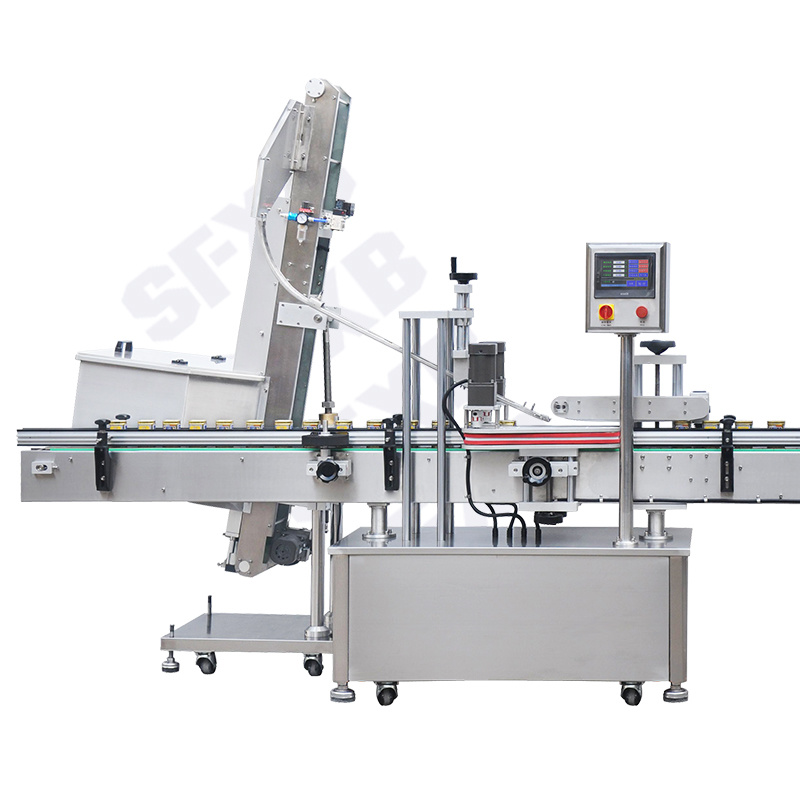 Tóm lại, máy đóng nắp bán tự động nhanh hơn và nhất quán hơn máy đóng nắp thủ công, nhưng đơn giản hơn và rẻ hơn nhiều so với máy đóng nắp hoàn toàn tự động. Lựa chọn phụ thuộc vào khối lượng sản xuất và ngân sách. Đối với phòng thí nghiệm mỹ phẩm nhỏ hoặc dây chuyền đồ uống thủ công, máy đóng nắp bán tự động có thể cung cấp đủ tốc độ và khả năng kiểm soát. Máy đóng nắp hoàn toàn tự động là tốt nhất khi nhu cầu đầu ra rất cao (ví dụ như nhà máy đồ uống hoặc dược phẩm lớn), trong khi đóng nắp thủ công thường dành cho các nhiệm vụ đóng nắp khối lượng rất thấp, không thường xuyên.
Tóm lại, máy đóng nắp bán tự động nhanh hơn và nhất quán hơn máy đóng nắp thủ công, nhưng đơn giản hơn và rẻ hơn nhiều so với máy đóng nắp hoàn toàn tự động. Lựa chọn phụ thuộc vào khối lượng sản xuất và ngân sách. Đối với phòng thí nghiệm mỹ phẩm nhỏ hoặc dây chuyền đồ uống thủ công, máy đóng nắp bán tự động có thể cung cấp đủ tốc độ và khả năng kiểm soát. Máy đóng nắp hoàn toàn tự động là tốt nhất khi nhu cầu đầu ra rất cao (ví dụ như nhà máy đồ uống hoặc dược phẩm lớn), trong khi đóng nắp thủ công thường dành cho các nhiệm vụ đóng nắp khối lượng rất thấp, không thường xuyên.
Các trường hợp sử dụng thực tế và ngành công nghiệp
máy đóng nắp bán tự động được sử dụng trong nhiều ngành công nghiệp khác nhau. Một số tình huống điển hình bao gồm:
● Dược phẩm và chăm sóc sức khỏe: Các phòng thí nghiệm dược phẩm vừa và nhỏ và các nhà sản xuất theo hợp đồng thường sử dụng máy đóng nắp bán tự động. Họ có thể đóng nắp chai thuốc, lọ thuốc nhỏ giọt hoặc chất bổ sung. Kiểm soát mô-men xoắn chính xác là điều quan trọng ở đây để đảm bảo bằng chứng giả mạo và tránh nhiễm bẩn. Nhiều máy đóng nắp băng ghế đáp ứng các tiêu chuẩn GMP và được sử dụng trong các dây chuyền đóng gói vô trùng.
● Mỹ phẩm và sản phẩm làm đẹp: Chai nước hoa, lọ đựng kem dưỡng da và kem, lọ đựng tinh dầu và hộp đựng đồ trang điểm thường được đóng kín bằng máy bán tự động. Các công thức mỹ phẩm thường cần xử lý nhẹ nhàng (để tránh bắn tung tóe), và nắp có thể thay đổi từ bơm phun đến nắp nhỏ giọt đến nắp vặn. Máy đóng nắp chai bán tự động cung cấp sự linh hoạt để xử lý hỗn hợp các hộp đựng này trên một dây chuyền sản xuất trung bình.
● Thực phẩm và đồ uống: Các nhà chế biến thực phẩm và nhà sản xuất đồ uống quy mô nhỏ (ví dụ như nhà máy bia thủ công, quầy nước ép, nhà sản xuất nước sốt) sử dụng máy đóng nắp bán tự động cho chai và lọ. Việc đóng nắp nước sốt, dầu, xi-rô hoặc gia vị bằng tay rất chậm; một người đóng nắp mới vào nghề có thể đóng chặt nắp lọ mứt, chai soda hoặc hộp đựng giấm một cách nhất quán. Ví dụ, một nhà máy bia thủ công có thể sử dụng máy đóng nắp bán tự động để hoàn thiện quá trình đóng chai sau khi chiết rót, cải thiện độ đồng nhất so với việc đóng nắp bằng tay.
● Hóa chất và chất lỏng đặc biệt: Các công ty đóng gói keo dán, dầu, mực và chất tẩy rửa thường cần máy đóng nắp bền. Máy đóng nắp bán tự động rất phù hợp vì chúng tránh tiếp xúc thủ công và tăng tốc độ dây chuyền. Chúng có thể xử lý nắp kim loại hoặc nắp nhựa trên chai dung môi hoặc kem dưỡng da. Một số mẫu thậm chí còn được sử dụng cho các phòng thí nghiệm vật liệu nguy hiểm vì chúng đảm bảo niêm phong chặt chẽ mà không cần người vận hành phải giữ chai.
● Sản phẩm nông nghiệp và công nghiệp: Các hoạt động đóng gói thuốc trừ sâu hoặc phân bón nhỏ hơn có thể sử dụng máy đóng nắp bán tự động cho các lần chạy khối lượng trung bình. Các máy có thể xử lý cả nắp vặn bằng nhựa và miếng chèn kim loại thường thấy trên các thùng chứa hóa chất. Năng suất tăng lên (so với mô-men xoắn thủ công) giúp duy trì lưu lượng trong sản xuất.
Trong mỗi trường hợp, chủ đề chung là khối lượng sản xuất vừa phải (hàng chục đến vài trăm đơn vị mỗi giờ) khi cần giải pháp niêm phong linh hoạt nhưng đáng tin cậy. Máy đóng nắp bán tự động thường đóng vai trò nâng cấp từ việc đóng nắp thủ công tốn nhiều công sức và có thể là bước đệm hướng tới tự động hóa hoàn toàn khi khối lượng tăng lên.
Máy đóng nắp bán tự động được đề xuất
Khi mua máy đóng nắp bán tự động, hai ví dụ đáng chú ý là máy điều khiển bằng máy vi tính XuebaPack SFXG-100 và SFXG-200. Các mẫu này minh họa cách các tính năng phù hợp với các nhu cầu khác nhau:
● SFXG-100 Máy đóng nắp vi tính: Mẫu máy này xử lý nhiều loại nắp có hình dạng và kích thước khác nhau (như nắp chuyên dụng hoặc hình dạng không đều). Máy được thiết kế với hệ thống điều khiển vi tính, màn hình kỹ thuật số và giao diện nút cảm ứng để vận hành trực quan. Thông số kỹ thuật chính: máy đóng nắp chai có chiều cao lên đến khoảng 300 mm, với đường kính nắp khoảng 20–50 mm. Mô-men xoắn của SFXG-100 có thể điều chỉnh (thường là 4–8 kgf·cm), bảo vệ nắp mỏng manh khỏi bị hư hỏng. Tốc độ được báo cáo của máy lên đến 30 chai mỗi phút, phù hợp với các phòng thí nghiệm nhỏ hoặc dây chuyền sản xuất xử lý nhiều thiết kế nắp khác nhau.
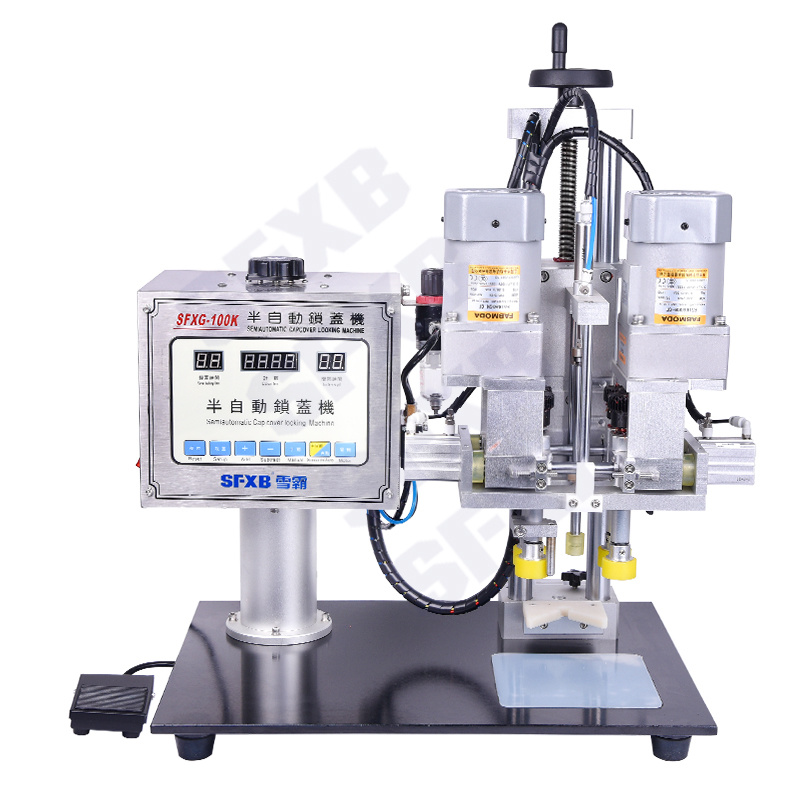 |
Máy đóng nắp bán tự động điều khiển bằng máy vi tính SFXG-100
SFXG-100 có nhiều loại nắp khóa, có thể khóa các loại nắp có hình dạng và thông số kỹ thuật khác nhau (như nắp mỏ vịt); |
● SFXG-200 Máy đóng nắp vi tính: SFXG-200 có thiết kế tương tự nhưng được tối ưu hóa cho nắp phẳng tròn cao (thường gặp trên chai tròn hoặc vuông). Máy cũng sử dụng các nút điều khiển kỹ thuật số và cung cấp các tính năng như thân bằng thép không gỉ và điều chỉnh độ cao bằng tay quay. Tốc độ siết của máy cao hơn – lên đến khoảng 40 chai mỗi phút – khiến máy trở thành lựa chọn tốt nếu bạn cần vận hành nhanh hơn cho các loại nắp đơn giản. SFXG-200 có thể điều chỉnh mô-men xoắn trong cùng phạm vi và được ghi nhận là phù hợp với các ngành công nghiệp như thực phẩm, mỹ phẩm và hóa chất hàng ngày.
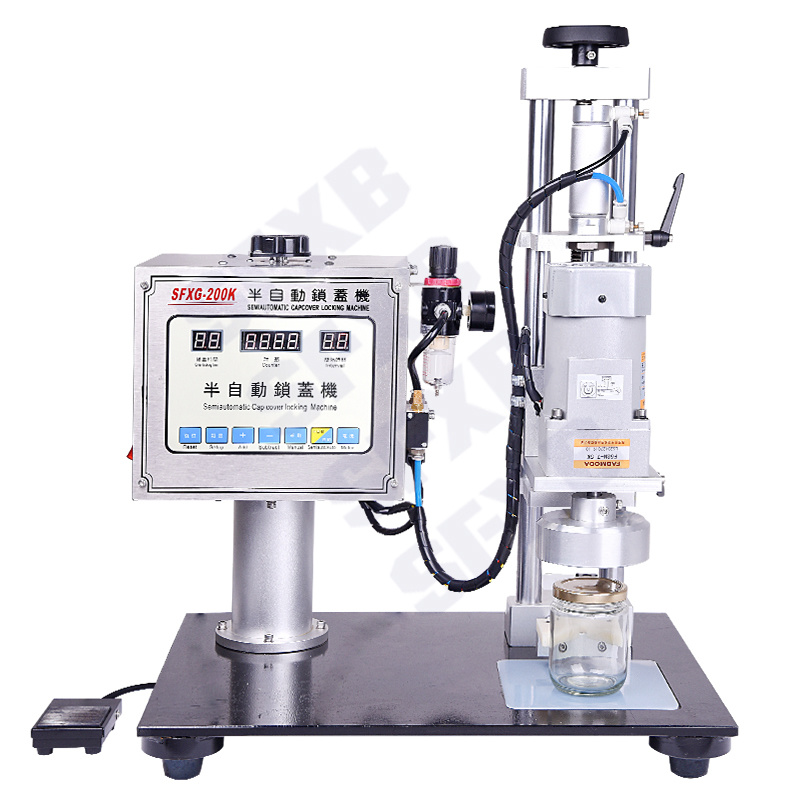 |
Máy đóng nắp bán tự động điều khiển bằng máy vi tính SFXG-200
SFXG-200 thích hợp để khóa nắp như nắp phẳng tròn như chai tròn và chai vuông |
Cả hai máy SFXB này đều minh họa các tính năng bán tự động phổ biến: điều khiển bằng máy vi tính (PLC) để có độ chính xác, mô-men xoắn có thể điều chỉnh để bảo vệ nắp và thiết kế để bàn nhỏ gọn. Điểm mạnh của SFXG-100 là tính linh hoạt với các hình dạng nắp, trong khi SFXG-200 vượt trội về tốc độ đối với các nắp tiêu chuẩn. Nếu lựa chọn giữa chúng, hãy chọn kiểu máy phù hợp với loại nắp của bạn: sử dụng SFXG-100 cho các nắp đặc biệt hoặc khó lắp và SFXG-200 cho công suất cao với hình dạng nắp đồng nhất.
Đánh giá nhà cung cấp và hỗ trợ sau bán hàng
Cuối cùng, việc lựa chọn máy đóng nắp phù hợp cũng có nghĩa là lựa chọn nhà cung cấp phù hợp. Khi so sánh các nhà sản xuất và nhà phân phối, hãy cân nhắc những điểm sau:
● Uy tín và kinh nghiệm: Tìm kiếm các công ty có thành tích đã được chứng minh trong lĩnh vực máy móc đóng gói. Một nhà cung cấp đã phục vụ ngành của bạn (dược phẩm, thực phẩm, mỹ phẩm, v.v.) trong nhiều năm có nhiều khả năng hiểu được nhu cầu về quy định và kỳ vọng về chất lượng của bạn. Đọc các đánh giá của khách hàng hoặc nghiên cứu tình huống nếu có. Một nhà cung cấp có uy tín phải có lời chứng thực hoặc tài liệu tham khảo chứng minh việc lắp đặt thành công và sự hài lòng của khách hàng trong thời gian dài.
● Chất lượng thiết bị: Kiểm tra chất lượng xây dựng. Các nhà cung cấp đáng tin cậy hợp tác với các nhà sản xuất chất lượng, thường nhấn mạnh việc sử dụng các vật liệu bền như thép không gỉ cao cấp và các thành phần chính xác. Tìm hiểu về các chứng nhận (CE, ISO, GMP, v.v.) phản ánh sự tuân thủ các tiêu chuẩn của ngành. Theo khuyến nghị của một hướng dẫn trong ngành, hãy đảm bảo thiết bị được xây dựng để sử dụng nhiều và có quy trình kiểm soát chất lượng vững chắc. Nếu có thể, hãy yêu cầu trình diễn hoặc video về máy thực tế chạy loại thùng chứa của bạn.
● Dịch vụ và hỗ trợ sau bán hàng: Dịch vụ tuyệt vời có thể quan trọng như chính máy móc. Trước khi mua, hãy kiểm tra xem nhà cung cấp có cung cấp dịch vụ lắp đặt tại chỗ, đào tạo người vận hành và hỗ trợ kỹ thuật liên tục hay không. Nhiều nhà cung cấp cung cấp dịch vụ trợ giúp qua điện thoại hoặc email 24/7 trong trường hợp có vấn đề. Hãy hỏi cụ thể về phạm vi bảo hành sau bán hàng: Họ có hỗ trợ thiết lập và khắc phục sự cố không? Họ có cung cấp phụ tùng thay thế và bộ dụng cụ bảo trì phòng ngừa không? Một số nhà cung cấp (như một số OEM đóng gói) thậm chí còn bao gồm cả mâm cặp đóng nắp dự phòng hoặc cung cấp kỹ thuật viên trực tiếp để khởi động ban đầu. Hãy cảnh giác với những nhà cung cấp khó liên lạc sau khi đã bán xong – hãy tìm những nhà cung cấp chú trọng vào dịch vụ khách hàng.
● Bảo hành và Tổng chi phí: Xem xét kỹ các điều khoản bảo hành. Bảo hành toàn diện (ít nhất một năm) cho thấy sự tin tưởng vào độ tin cậy của máy. Xem xét tổng chi phí sở hữu: tính đến mức sử dụng năng lượng, bảo trì dự kiến (bôi trơn, thay thế phụ tùng) và tính khả dụng của phụ tùng thay thế. Máy móc rẻ hơn từ các thương hiệu không rõ ràng có thể giảm chi phí ban đầu nhưng tăng rủi ro thời gian chết sau này. Như một chuyên gia lưu ý, việc cân bằng chi phí so với giá trị lâu dài là rất quan trọng. Trong thực tế, đầu tư vào một máy móc đắt hơn một chút từ một nhà cung cấp đáng tin cậy thường mang lại lợi ích bằng cách giảm thiểu gián đoạn sản xuất.
Bằng cách đánh giá các nhà cung cấp theo các tiêu chí này – danh tiếng, chất lượng máy móc, dịch vụ và hỗ trợ – bạn đảm bảo không chỉ có một máy móc tốt mà còn có một mối quan hệ tốt. Trong tìm nguồn cung ứng toàn cầu, hãy cân nhắc xem nhà cung cấp có sự hiện diện tại địa phương hay nhà phân phối trong khu vực của bạn hay không, điều này có thể cải thiện thời gian phản hồi dịch vụ.
Phần kết luận
Việc lựa chọn máy đóng nắp bán tự động phù hợp đòi hỏi phải kết hợp thiết bị với sản phẩm và nhu cầu sản xuất của bạn. Bắt đầu bằng làm rõ những gì bạn đang đóng nắp (loại và kích thước của nắp và chai), bạn cần đóng nắp bao nhiêu lần mỗi phút và nắp phải chặt đến mức nào. Tập trung vào các máy được chế tạo từ vật liệu phù hợp (thường là thép không gỉ), với các tính năng như mô-men xoắn có thể điều chỉnh, điều chỉnh độ cao dễ dàng và điều khiển rõ ràng. So sánh các mẫu máy đóng nắp bán tự động (ví dụ: SFXB SFXG-100 và SFXG-200) dựa trên khả năng tương thích và tốc độ đóng nắp của chúng. Cũng quan trọng không kém, hãy chọn một nhà cung cấp có uy tín, cung cấp dịch vụ hỗ trợ sau bán hàng, bảo hành và đào tạo vững chắc. Bằng cách cân nhắc cẩn thận tất cả các yếu tố này, bạn có thể tìm thấy một máy đóng nắp bán tự động giúp tăng hiệu quả và độ tin cậy trên dây chuyền sản xuất của mình mà không phải chi tiêu quá mức.
| Tài liệu tham khảo: | |
| 1. | Chọn máy đóng nắp chai phù hợp với nhu cầu sản xuất của bạn –Lấy từ:Tạp chí Boss |
| 2. | Doanh số bán máy móc đóng gói dự kiến sẽ tăng lên mức cao mới vào năm 2027 –Lấy từ: PMMI |
| 3. | 12+ Cân nhắc khi lựa chọn máy đóng nắp tiếp theo của bạn –Lấy từ:Thế giới bao bì |
| 4. | Tổng quan kỹ thuật về thiết bị kiểm tra mô-men xoắn được sử dụng để xác nhận dung sai mô-men xoắn đóng và tối ưu hóa cài đặt máy đóng nắp để ngăn rò rỉ và dễ mở.–Lấy từ:Máy kiểm tra mô-men xoắn nắp (Wikipedia) |


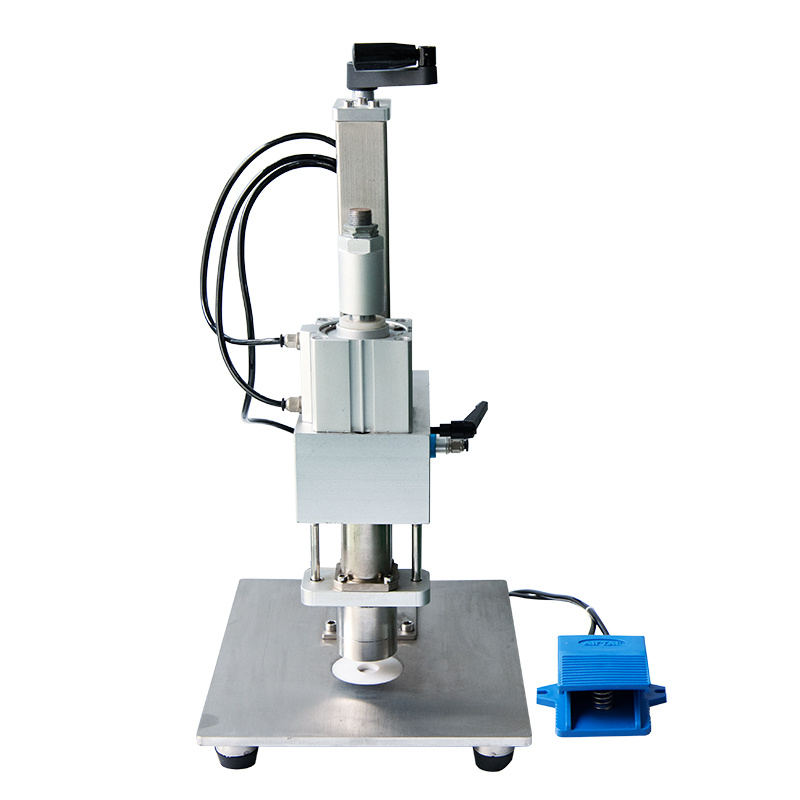
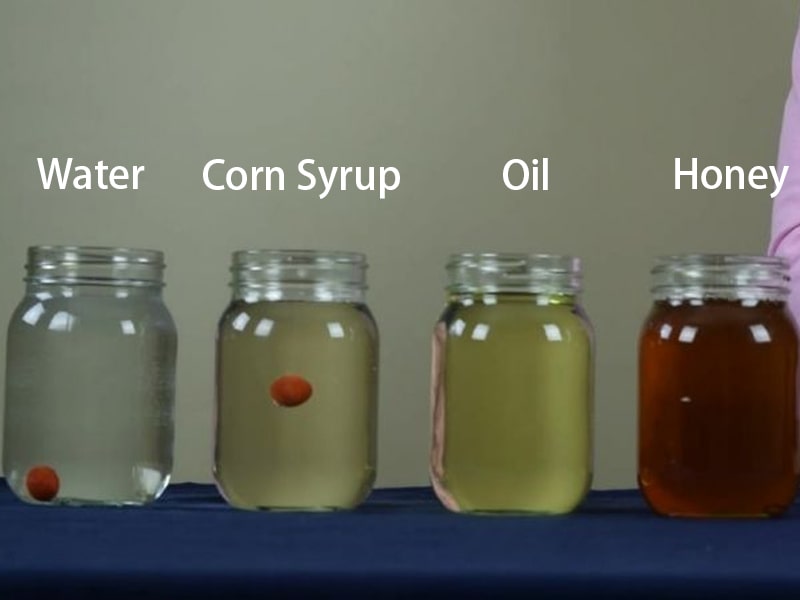

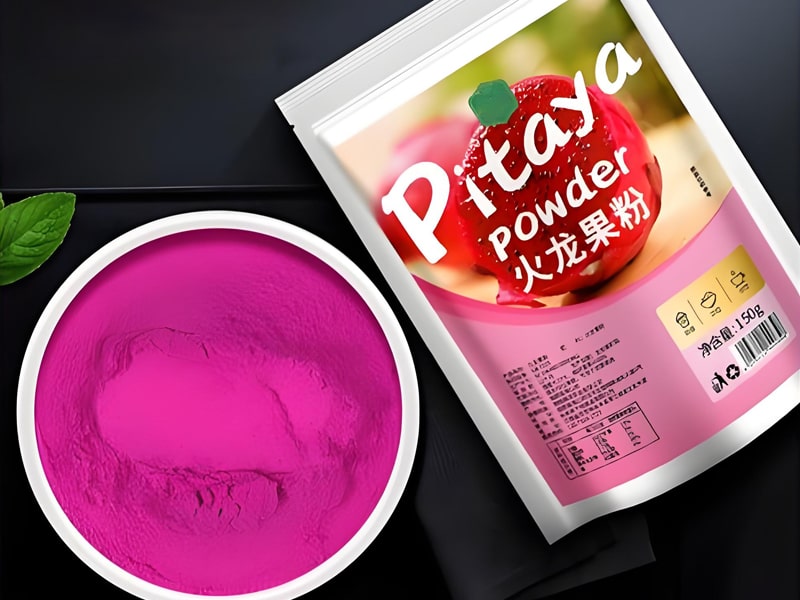

Bình luận